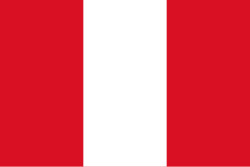Carlos Ismael Noriega
| Carlos Ismael Noriega | |
|---|---|
 Carlos Ismael Noriega | |
| Astronaut NASA | |
| Státní příslušnost | |
| Datum narození | 8. října 1959 (63 let) |
| Místo narození | Lima, |
| Předchozí zaměstnání | Letec námořnictva |
| Hodnost | podplukovník |
| Čas ve vesmíru | 20 dní, 1 hodina a 18 minut |
| Kosmonaut od | 1994 |
| Mise | STS-84, STS-97 |
| Znaky misí | |
| Kosmonaut do | 2005 |
| Některá data mohou pocházet z datové položky. | |
Carlos Ismael Noriega (*8. října 1959 Lima), americký pilot a kosmonaut. Ve vesmíru byl dvakrát.
Život
Studium a zaměstnání
Absolvoval střední školu Wilcox High School v městě Santa Clara (v Kalifornii) , po jejím ukončení v roce 1977 pokračoval ve studiu na University of Southern California. Ukončil jej v roce 1981. V roce 1990 ukončil postgraduální studium na Naval Postgraduate School.
Od roku 1983 byl pilotem helikoptéry, později působil na různých místech a funkcích v USA i Japonsku.
V roce 1994 se zapojil do výcviku budoucích kosmonautů v Houstonu, o dva roky později byl členem jednotky kosmonautů v NASA. Zůstal zde do roku 2005. U NASA zůstal i pak ve vedoucích řídících funkcích.
Oženil se, jeho manželkou se stala Wendy, rozená Thatcherová-
Lety do vesmíru
Na oběžnou dráhu se v raketoplánu dostal dvakrát s funkcí letový specialista, pracoval na orbitálních stanicích Mir i ISS a strávil ve vesmíru 20 dní, 1 hodinu a 18 minut. Třikrát vystoupil do volného vesmíru (EVA), strávil v něm 19 hodin a 20 minut. Byl 358 člověkem ve vesmíru.
- STS-84 Atlantis (15. května 1997 – 24. května 1997),
- STS-97 Endeavour (1. prosinec 2000 – 11. prosinec 2000)
Odkazy
Externí odkazy
 Obrázky, zvuky či videa k tématu Carlos Ismael Noriega na Wikimedia Commons
Obrázky, zvuky či videa k tématu Carlos Ismael Noriega na Wikimedia Commons - Na webu Space
- Na webu MEK-Kosmo
Média použitá na této stránce
Autor: NASA on The Commons, Licence: No restrictions
Official photographic portrait showing Carlos Noriega in an Extravehicular Mobility Unit (EMU) with U.S. flag in the background. Image #: S99-13424 Date: November 2, 1999
The STS-84 emblem depicts the Space Shuttle Atlantis launching into Earth orbit to join the Russian Space Station Mir as part of Phase One (Shuttle-Mir) of the International Space Station program. The names of the eight astronauts who flew onboard Atlantis, including the two who changed their positions onboard Mir for a long duration flight, are shown along the border of the patch. The STS-84/Mir-23 team will transfer 7,000 pounds of experiments, Station hardware, food and clothing to and from Mir during the five-day period of docking. The Phase One program is represented by the rising Sun and by the Greek letter Phi followed by one star. This sixth Shuttle-Mir docking mission is symbolized by the six stars surrounding the word Mir in Cyrillic characters. Combined, the seven stars symbolize the current configuration of Mir, composed of six modules launched by the Russians and one module brought up by Atlantis on a previous docking flight.
This is the crew insignia for STS-97, which will deliver, assemble, and activate the U.S. electrical power system on board the International Space Station (ISS). The electrical power system, which is built into a 47-foot integrated truss structure known as P6, consists of solar arrays, radiators, batteries, and electronics. P6 will be attached to the Station using the Shuttle's robotic arm in coordination with spacewalking crewmembers that will make the final connections. The spacewalkers will then prepare P6 for the subsequent deployments of the large solar arrays and radiator, which are critical steps in the activation of the electrical power system. The 120-foot solar arrays will provide the power necessary for the first ISS crews to live and work in the U.S. segment.
The crew patch depicts the Space Shuttle docked to ISS in low Earth orbit after the activation of the P6 electrical power system. Gold and silver are used to highlight the portion of ISS that will be installed by the STS-97 crew. The Sun, central to the design, is the source of energy for ISS.




